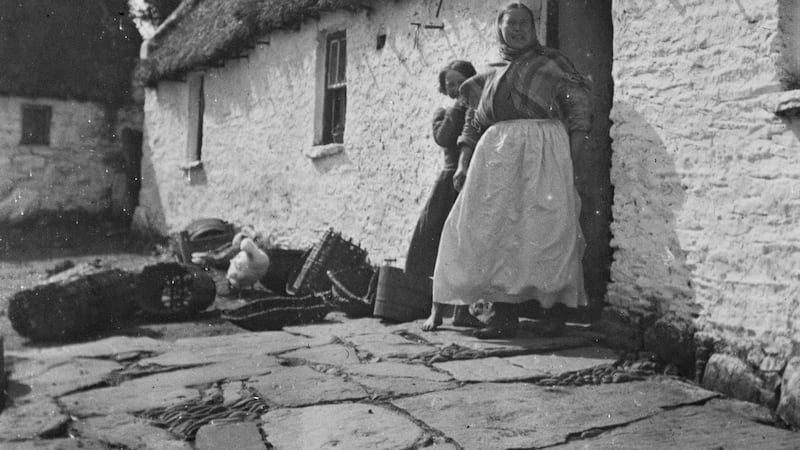"Scenes of a most-extraordinary character were witnessed at the Abbey Theatre, Dublin, last night in connection with the performance of 'The Playboy of the Western World'.
“An organised attempt had evidently been made to prevent the performance, and despite the efforts of the management and the presence of a number of police constables the interrupters succeeded in their object of preventing anybody from hearing a single word of the entire performance.”
So began The Irish Times report of the riot that broke out at the opening night performance of John Millington Synge's epochal play at The Abbey Theatre on January 26th, 1907.

In a telegram sent to the absent W.B. Yeats that night, Lady Gregory explained what triggered the disruption: "Play broke up in disorder at the word 'shift'".
Marking the 110th anniversary of the tumultuous premiere, Trinity College Dublin, in collaboration with the Google Cultural Institute, is hosting an online exhibition on the three-act masterpiece that upset the moral order of its time.
The exhibition explores the story behind the play and features photographs and notes including entries for the various endings of the play written by the playwright.
JM Synge, who spent four summers learning Irish on Inis Meáin famously exchanged tales with the locals - one of which subsequently ended up forming the basis for the plot in his best known play.
The digital exhibition, titled 'Journey of a Playboy' traces the origins of the The Playboy of the Western World to the story which Synge heard on his first visit to the island and subsequently wrote about in his book The Aran Islands.
The story tells the tale of a young man who fled to the island after murdering his father with a spade. He was given shelter for several weeks before passage was arranged to America.
Clearly taken with the story, Synge explored what might have led the islanders to hide such a killer.
"This impulse to protect the criminal is universal in the west. It seems partly due to the association between justice and the hated English jurisdiction, but more directly to the primitive feeling of these people, who are never criminals yet always capable of crime, that a man will not do wrong unless he is under the influence of a passion which is as irresistible as a storm on the sea," he wrote in The Aran Islands.
“If a man has killed his father, and is already sick and broken with remorse, they can see no reason why he should be dragged away and killed by the law.”
Synge spent time in west Kerry, in the Blasket Islands, as well as in Connemara during his period working with the Congested Districts Board. The exhibition shows how the language of the play was enriched by phrases he heard during this time.
The exhibition features photographs taken by Synge of the McDonagh cottage where he stayed during his first visit to Inis Meáin in May 1898 and of the Harris's Cottage in Mountain Stage, Co. Kerry where he stayed in 1903-06.
It also features notes taken by the author as he built the narrative of the play.
Curated by Nicholas Grene and James Little of TCD's School of English, the exhibition will be launched by guest speaker Professor of Anglo-Irish Literature, Margaret Kelleher of UCD in the Trinity Long Room Hub, Trinity College, on Wednesday, 18 January, 2017 from 6.30-8.30pm.
To view the exhibition, follow this link: http://on.irishtimes.com/rno3L1M












